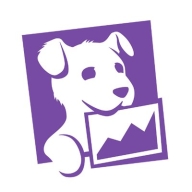

Datadog and OpServices OpMon are competitive products in the network monitoring category. Datadog seems to have the upper hand in cloud-based application monitoring, offering seamless integration and comprehensive application performance insights, whereas OpMon provides tailored network monitoring solutions for on-premise needs.
Features: Datadog specializes in real-time cloud monitoring, advanced log management, and application performance monitoring, enabling enhanced visibility into cloud infrastructure. OpMon offers the advantage of custom dashboards, robust alerting capabilities, and comprehensive network mapping. Datadog addresses the needs of tech-savvy environments with a broad suite of features, while OpMon provides in-depth solutions for businesses needing customized network insights.
Ease of Deployment and Customer Service: Datadog facilitates rapid cloud-based deployment with minimal setup, promoting an efficient adoption process. OpMon requires a more involved setup due to its on-premise nature, which allows for extensive customization. Datadog generally provides more responsive customer service, whereas OpMon's customer support may take longer to respond.
Pricing and ROI: Datadog uses a subscription model, which may result in higher costs over time, but offers a strong value proposition with advanced cloud capabilities and scalability. OpMon involves a higher upfront investment but potentially lower long-term costs through reduced operational expenses. Datadog offers quicker ROI for businesses focused on cloud monitoring, while OpMon is more cost-effective for companies prioritizing customized network oversight.
| Product | Market Share (%) |
|---|---|
| Datadog | 5.0% |
| OpServices OpMon | 0.1% |
| Other | 94.9% |

| Company Size | Count |
|---|---|
| Small Business | 78 |
| Midsize Enterprise | 42 |
| Large Enterprise | 82 |
Datadog integrates extensive monitoring solutions with features like customizable dashboards and real-time alerting, supporting efficient system management. Its seamless integration capabilities with tools like AWS and Slack make it a critical part of cloud infrastructure monitoring.
Datadog offers centralized logging and monitoring, making troubleshooting fast and efficient. It facilitates performance tracking in cloud environments such as AWS and Azure, utilizing tools like EC2 and APM for service management. Custom metrics and alerts improve the ability to respond to issues swiftly, while real-time tools enhance system responsiveness. However, users express the need for improved query performance, a more intuitive UI, and increased integration capabilities. Concerns about the pricing model's complexity have led to calls for greater transparency and control, and additional advanced customization options are sought. Datadog's implementation requires attention to these aspects, with enhanced documentation and onboarding recommended to reduce the learning curve.
What are Datadog's Key Features?In industries like finance and technology, Datadog is implemented for its monitoring capabilities across cloud architectures. Its ability to aggregate logs and provide a unified view enhances reliability in environments demanding high performance. By leveraging real-time insights and integration with platforms like AWS and Azure, organizations in these sectors efficiently manage their cloud infrastructures, ensuring optimal performance and proactive issue resolution.
We monitor all IT Infrastructure Monitoring reviews to prevent fraudulent reviews and keep review quality high. We do not post reviews by company employees or direct competitors. We validate each review for authenticity via cross-reference with LinkedIn, and personal follow-up with the reviewer when necessary.